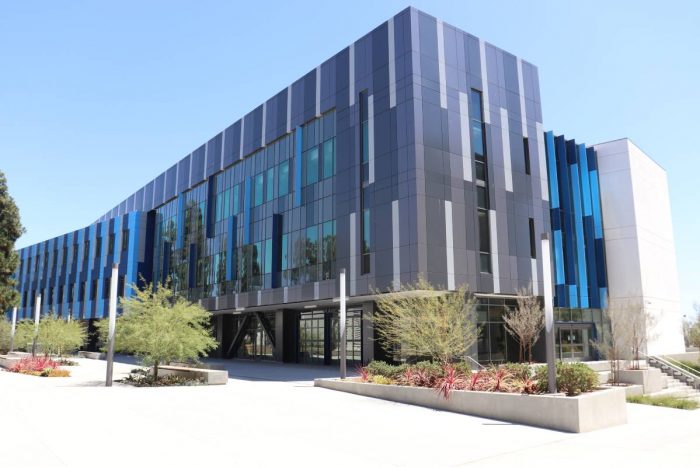Our top commercial property investment fundamentals
Published
November 29, 2022
Published
November 29, 2022

The top commercial property fundamentals will almost certainly position you toward success if applied correctly.
The Collins Dictionary says that a fundamental is a principle that affects the basic nature of something, or is the most important element upon which other things depend. As a commercial property investor, I couldn’t agree more, and especially so as we reflect on the market uncertainties our recent pandemic created.
Smart investors turned to property fundamentals during the height of the pandemic, seeing success in newly purchased commercial assets while the pandemic plagued most other investment avenues.
Who knows, applying property fundamentals is perhaps why Australian real estate grew in the face of every recent financial crisis.
What are the fundamentals of commercial real estate?

Investing is – to say the least – about making money. And the two elements of doing so are rental income growth and property value growth.
You won’t find the list of property fundamentals in commercial real estate set in stone. But they typically go something like this:
- Where does the market currently sit in the property cycle?
- Does the chosen location have a history of success? And will it likely continue?
- Does the property offer diverse income profiles?
- How is the sentiment and confidence of the economy’s stakeholders?
- Will interest rates rise or fall in the future? And how will that impact the investment?
Using property fundamentals is unlike using data to make property decisions. While data is certainly a must-have in your arsenal – one which we use as our north star at times – it matters little if it is not applied alongside the basic elements of property investment.
But there are two major property fundamentals we believe will steer investors in the right direction when looking for their next commercial real estate investment in the 2023 financial year:
- How stable is the property’s rental income? And could it even increase?
- Is there evidence of cap rate compression in the market? And if so, how much?

So, why these two?
Well, investment is – to say the least – about making money. And these fundamentals address the two elements of doing so: rental income growth and property value growth.
2023 is around the corner, and more investors are returning to the investment market. Here are two questions the successful players will be asking.
How stable is the property’s rental income?
Before you take ownership of a property, you’ll want to know if rent will continue to come through the door next month, and the month after that. This reliability of income is what pulls many into the commercial property market. But the lack of consideration as to whether there is longevity in that income is what can put holes in many investors’ pockets.
Currently, certain asset classes and certain tenant types are more reliable than others. Of course, occupants in essential services – like supermarkets, medical, and logistics – have kept their landlords’ heart rate at a steady pace throughout the pandemic, and the snap lockdowns in each state. And they’ll continue providing stable rental income well into the future.

But it can be competitive to procure the type of premises these essential services tenants wish to occupy. Luckily, investors can instead return to property fundamentals.
Leasing your premises to a nationally- or internationally-operated tenant, with a history of strong performance in its sector, and the firm likelihood of continued relativeness, will be a giant step toward a stable future income stream.
Beyond rental stability, if there is a chance that you’ll see your tenant’s rental increase then that’s a huge win.
Investors in 2023 should keep an eye out for under-rented assets. With upward pressure on leasing demand in some sectors, maybe there’s a higher quality occupant willing to occupy the premises once the existing tenancy agreement expires.
You must be comfortable that the rental you’re deriving today is maintainable in the future. And if it can improve over time? Then, that’s the ultimate reward for an asset well purchased.
Is there evidence of cap rate compression?
The capitalisation rate, or cap rate, is a key indicator for property professionals.
It is essentially the rate of return an investor can expect to generate from a real estate investment, and whether it’s rising or falling can tell an investor a lot about their property’s future capital value. A cap rate is basically another term for yield, and it works inversely with property values. The lower (or more compressed) the cap rate; the higher the property value.
Capital rate compression occurs in rising markets, where investors believe prices will continue to go up. At the same time, rental is not expected to increase. This inverse cap rate/property value relationship is crucial to consider before signing on the dotted line.
If you think capital rates are going to slide, even with solid rent coming in the door from your tenant, then you might have to consider the impacts on the growth of your property’s value. Because if your property’s value declines, then the money you borrowed from the bank will all of a sudden eat away at your equity and take up a larger portion of your property’s worth.
But if yields for similar properties as yours continue to tighten over the next three to five years, then there’s a strong likelihood you will see good, honest capital growth over that time period.
Now you’ve established the existence of cap rate compression, ask yourself how much cap rates have already compressed? Because this compression will not continue forever.
If a property was $8 million last year, and cap rates pushed its value to $10 million this year, then you’d be pretty brave to say that it’ll be $18 million next year. I’ll say it again, cap rate compression can’t last forever. Keep that in mind when penning your investment strategy.
So, there you have it. Two property fundamentals to aid you in successfully navigating the commercial real estate landscape post-covid:
- Are you comfortable that the rental your prospective asset is deriving today is maintainable (or even increasable) in the future?
- Are you seeing cap rate compression, and how long do you expect it will continue?
They’re not mind-boggling, nor are they complex. And that’s the point: Investors should keep it simple.
And if you can find a property which you think offers asset growth and rental income growth. Then you’ve hit the jackpot. We found an investment just like that, and our investors saw 100% return on their investment. Read more about our Larapinta investment here.
Subscribe for investment updates
Join hundreds of fellow property investors by subscribing to our Investment Updates. We’ll show you insights you won’t read in property publications, direct from the commercial property experts that have helped provide our investors with solid cash flow for over a decade.
Properties & Pathways is a dynamic commercial property investment company. For more information on how you can invest alongside us, get in touch today.






